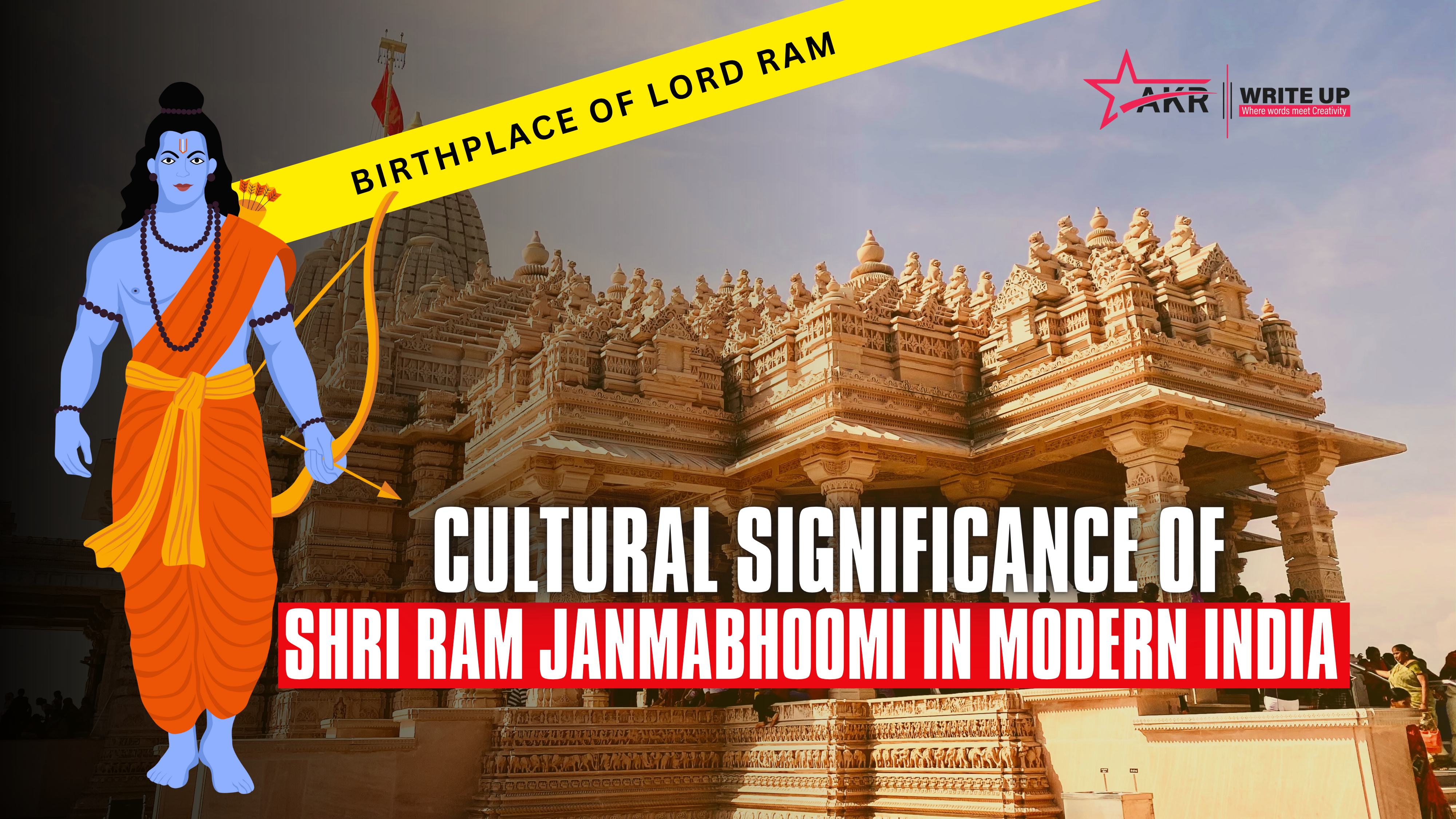The Ram Janmabhoomi importance in the heart of India extends beyond religious devotion—it embodies a deep connection to our cultural heritage, collective identity, and national consciousness. Located in Ayodhya, this sacred land has long been revered as the birthplace of Lord Ram, one of the most venerated deities in Hinduism.
Today, the cultural significance of Shri Ram Janmabhoomi in modern India reflects a unique convergence of ancient history, spiritual belief, and national resurgence.
🛕 Shri Ram Janmabhoomi Importance in Indian Culture
The concept of Ram Janmabhoomi importance lies in its foundational role in shaping the spiritual and moral fabric of Indian society. Lord Ram is not just a religious figure—he is the embodiment of dharma, righteousness, and ideal governance. His birthplace, therefore, is not just a geographic location but a living symbol of values that define Indian ethos.
Generations of Hindus have regarded Ayodhya as a tirtha, or pilgrimage site, where the divine once walked among mortals. This belief has kept the cultural and emotional link to Ram Janmabhoomi alive for thousands of years, passed through oral traditions, scriptures, and festivals.
A Brief Look at Ram Mandir History
The Ram Mandir history is both glorious and deeply contested. Historically, references to a temple at Lord Ram’s birthplace have existed for centuries. Ancient texts, foreign traveler accounts, and regional folklore all mention the temple at Ayodhya.
However, in the 16th century, the Babri Masjid was built by Mughal general Mir Baqi, allegedly after demolishing a pre-existing Ram temple. This sparked centuries of unrest, legal battles, and spiritual tension.
In 1992, the demolition of the disputed structure intensified communal and political fault lines. Yet, in a landmark judgment in 2019, the Supreme Court of India acknowledged the historical and religious significance of Ram Janmabhoomi, granting the land for temple construction and restoring faith in democratic resolution.
🏛️ Ayodhya Significance in the Modern Era
The Ayodhya significance today goes far beyond religion. It represents a long-awaited closure to a socio-political wound and the beginning of a new chapter rooted in cultural unity.
Modern India views Ayodhya not only as a sacred city but as a national heritage site. The development of the Ram Mandir is sparking massive infrastructure projects, tourism initiatives, and digital documentation to preserve and promote this ancient city’s essence.
For millions, the foundation and construction of the new temple reflect not only religious freedom but also cultural reawakening and civilizational pride.
Ram Janmabhoomi and Indian Identity
Why does the Ram Janmabhoomi importance matter so deeply to modern Indians? It’s because the site reflects core elements of our Indian identity:
- Unity in Diversity: Despite religious differences, many Indians—Hindus, Muslims, and others—acknowledge Lord Ram as a cultural hero.
- Cultural Pride: The rediscovery and reclamation of sacred heritage helps restore national confidence in ancient wisdom.
- Moral Compass: The story of Ram, deeply tied to this land, offers moral clarity in times of social confusion.
In essence, Ayodhya is not just the home of a deity—it is the emotional home of an entire civilization.
🙏 Religious Beliefs and Devotional Relevance
At the heart of the Ram Mandir history lies the enduring faith of devotees. Across centuries, countless pilgrims have traveled to Ayodhya to connect spiritually with their Ishtadevata (chosen deity), Lord Ram.
In modern India, religious beliefs are evolving with technology and globalization, yet devotion to Ram remains timeless. From massive digital campaigns to traditional Ramayana path in homes, the energy around Ram Janmabhoomi continues to grow stronger with each generation.
Ayodhya, as a result, is emerging not just as a city, but as a spiritual ecosystem where religion, heritage, and modern infrastructure coexist harmoniously.
Ram Mandir Construction: A Symbol of Renewal
The ongoing construction of the Ram Mandir is more than an architectural marvel—it is a collective aspiration fulfilled. Designed in the ancient Nagara style, the temple is being built with time-tested materials, traditional engineering, and modern planning.
Key features:
- Over 360 temple pillars representing episodes from the Ramayana
- Granite and sandstone from Rajasthan and Karnataka
- High-tech museum, spiritual park, and digital exhibits
This fusion of old and new reflects the Ayodhya significance in India’s narrative: a nation looking backward with pride and forward with purpose.
Cultural Heritage and the Global Ramayana Influence
India’s cultural roots have always transcended borders, and Ram Janmabhoomi importance extends to the global stage. The Ramayana has inspired people across Southeast Asia, including Indonesia, Thailand, Cambodia, and Laos. Temples, performances, and sculptures in these countries reflect deep respect for Lord Ram.
The revival of Ram Janmabhoomi sends a powerful signal to the world: India is reclaiming and celebrating its cultural heritage unapologetically. It’s not a political act—it’s a cultural resurrection.
Education and Historical Awareness
One positive ripple effect of renewed focus on Ram Mandir history is growing awareness among youth. Through documentaries, school syllabi, and digital storytelling, young Indians are discovering the legacy of Ayodhya with fresh eyes.
Efforts are being made to correct historical misrepresentations and ensure that future generations understand both the spiritual and historical importance of this land.
When cultural literacy grows, so does respect for diversity, history, and national unity.
Voices from the Ground
Many local residents in Ayodhya see the Ram Mandir as an opportunity for development, employment, and tourism. Artisans, priests, guides, and small business owners are hopeful that the transformation will uplift livelihoods.
At the same time, scholars and saints emphasize that while the structure is important, the spirit of Ram Rajya—governance based on truth, justice, and compassion—must guide us forward.
Conclusion: Ram Janmabhoomi – More Than Just a Place
In today’s fast-paced, often fragmented world, the Ram Janmabhoomi importance reminds us of timeless values—faith, family, duty, and justice. It is a cultural cornerstone that connects Indians to their roots, provides moral direction, and inspires collective pride.
As the sun rises over the newly built temple in Ayodhya, it lights up not just marble and stone, but the hearts of millions. This is not just the rise of a temple—it is the revival of Indian civilization’s soul.







